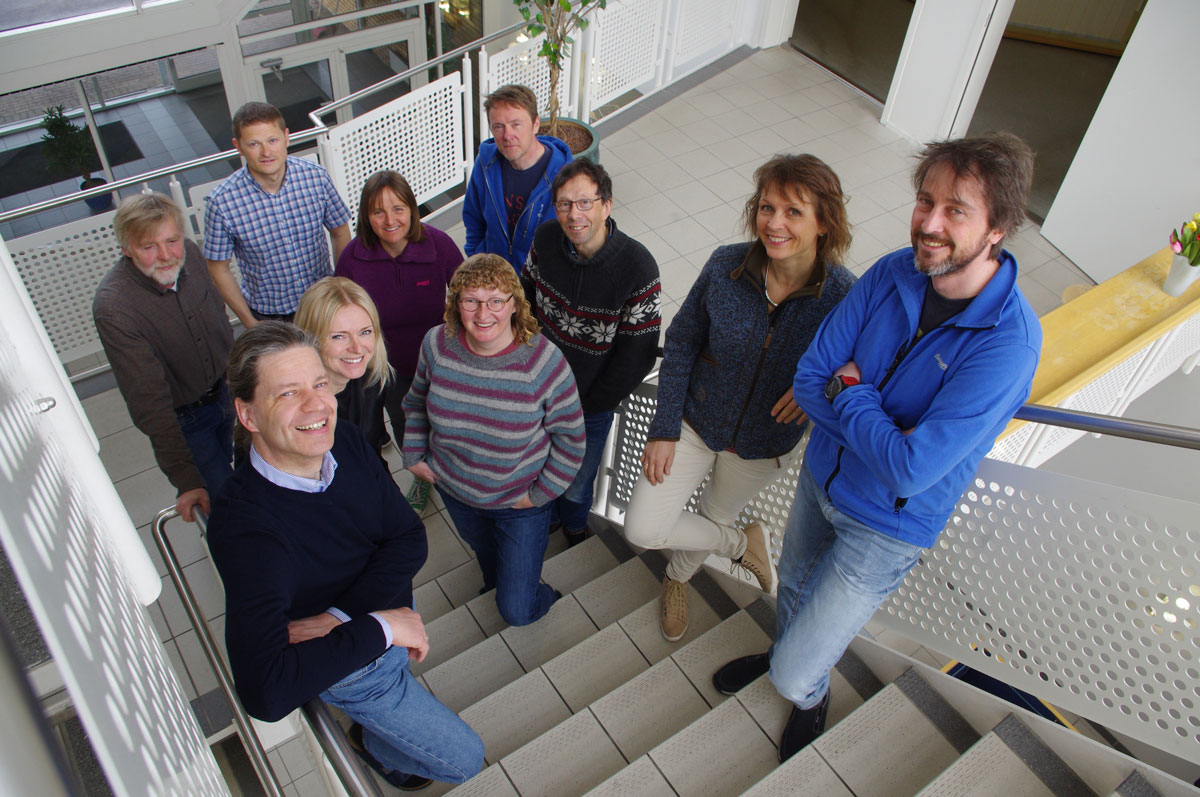From the NILU Annual Report 2016: ACTRIS is an infrastructure enabling observation-based research to improve understanding of climate and air pollution. The main focus is aerosols, clouds and reactive gases in the atmosphere, and their physical, optical and chemical properties.
In 2016, ACTRIS (Aerosols, Clouds, and Trace gases Research Infrastructure) was selected for the European roadmap for research infrastructures.
– The fact that ACTRIS is now part of the ESFRI roadmap confirms that the infrastructure is considered an important tool for European research. Many European countries participate in the infrastructure, and our contribution to international cooperation is central for maintaining international leading research during the next decades, explains senior scientist Cathrine Lund Myhre from NILU’s Department of Atmosphere and Climate.
Research that includes advanced analysis of high quality data provides the opportunity to study how the atmosphere changes as a result of man-made emissions. The results are used amongst others by the European Evaluation and Monitoring Program (EMEP) under the UN’s Long Transport Convention, and by the Global Atmospheric Watch under World Meteorological Organization (WMO). The number of scientific articles using ACTRIS data is in the order of approx. 100 in scientific journals per year.
ACTRIS is important for future research…
ACTRIS has gradually evolved over the last 10-15 years through a number of different EU projects. Right now, ACTRIS-2, an EU project under Horizon 2020 (http://www.actris.eu) is underway, and the ACTRIS Preparatory Phase (PPP) was recently launched. The purpose of ACTRIS PPP is to establish ACTRIS as a long-term operational research infrastructure for the next 20 years.
– This extended time span is important, continues Lund Myhre, – because comparable observations over time and in geographical distribution are crucial for improving our knowledge of different processes and long-term trends in the atmosphere. This knowledge plays a decisive role in how European countries will meet the societal and environmental challenges that will arise over the next few decades, such as air quality and climate change.
ACTRIS provides quality assured data and data products for the whole of Europe, with all key variables for particles, clouds and reactive gases in the atmosphere. All key optical and physical properties of particles are included, such as size distribution, scattering and absorption of particles, chemical composition with high time resolution, and distribution of particles in height using lidar measurements, as well as different cloud variables. In addition, reactive gases, including a wide range of light hydrocarbons and volatile organic compounds across Europe, are measured. The ACTRIS data form the basis for large and wide research in climate, air quality and weather forecast.
In addition to data access, ACTRIS also provides access to advanced laboratories and field observatories. Eventually, the ACTRIS research infrastructure will also provide access to atmospheric simulation chambers, which today is part of the EUROCHAMP infrastructure. This includes laboratories and chambers to study reaction rates for relevant processes that occur in the atmosphere.
…and for managing authorities in Norway and Europe
National and international authorities are key users of ACTRIS services today, and this will be strengthened in the future. ACTRIS will provide services necessary to ensure that national data for particle and reactive gases are harmonized at an international level, so that they can be used in regional and continental scale assessments of the atmosphere.
Such harmonization is necessary in order to assess the impact of environmental measures, develop more effective climate measures and to verify binding environmental agreements at national, European and international levels. Many instruments included in the Norwegian Environment Agency’s program for national monitoring of greenhouse gases and particles are now quality assured through the EU project ACTRIS-2. A continuation of this is important in order to obtain good data also in the future
The access to and continuation of all research data and other services included in ACTRIS will be strengthened in the future. All countries contributing to this will have free access to all ACTRIS services.
NILU in ACTRIS
NILU contributes measurement data from the observatories in Svalbard (Zeppelin), Antarctica (Trollhaugen) and Aust-Agder (Birkenes). In addition, NILU manages the extensive data centre activity in ACTRIS, and coordinates all data flow and curation. All data are available through the ACTRIS data portal, http://actris.nilu.no.
Another part of NILU’s role is being responsible for collecting, storing, accessing and documenting all ground-level observations. This is done in EBAS, http://ebas.nilu.no, which is topic data base for these measurements and datasets.
A large group at NILU (see photo below) is involved in the data centre activity, and in a recent evaluation they received high praise for being able to harmonize heterogeneous data, making the products both useful and easily accessible.
– We work hard to facilitate both easy uploading and downloading of data in ACTRIS, says Cathrine Lund Myhre.
– The data are very important for research groups all over the world, and a summary shows that since January 2015, ACTRIS users have downloaded more than 24,000 annual data sets of measurements. In 2016 alone, we had on average more than 1100 different visits to EBAS per month, and approximately 1050 sets of ACTRIS data were downloaded every month. Improving the infrastructure to meet the research communities’ need for different data, formats and access is a continuous work we look forward to improving even more.

Read NILU annual report 2016:
Read annual report 2016 in pdf
Read annual report on the web (www.issuu.com):


